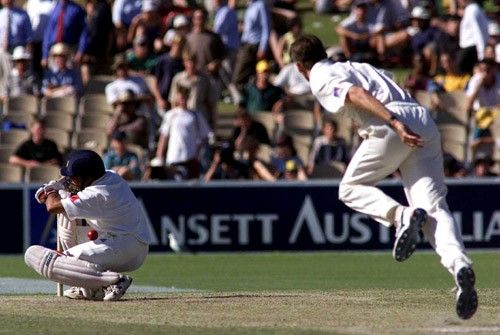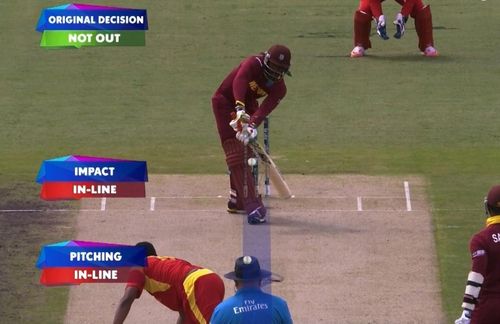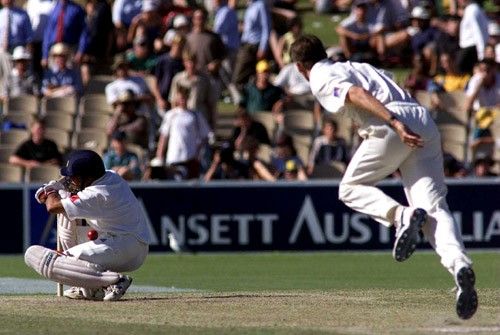
Leg before wicket (lbw): How does it work?
Cricket has always been considered as a batsman’s game throughout its history, despite there being various ways to dismiss a batsman. From being bowled to being caught by any fielder, to being run out, there are many ways one can be sent packing.
However, the leg before wicket (lbw) has always been the most talked about and discussed mode of dismissal in cricket for years now. So, what exactly makes the lbw the most intriguing of them all?
Basics of lbw
The MCC law which concerns the leg-before-wicket dismissal states that four points need to be considered while calling decision. These include the height of the ball when it hits the pads, the distance of the batsman from the crease, the area of the pitching of the ball (whether it pitched outside the leg stump, in line with the stumps or outside the off stump) and whether or not the batsman hit the ball before it struck his pads.
The rules in different situations can be summarised here:
- If batsman edges the ball before it makes impact with his pads - it is given not out.
- The ball cannot be pitched outside the line of leg stump. If it pitches outside, then the batsman cannot be given out even if he is not playing the ball.
- The ball can be pitched outside the off stump for a batsman to be given out lbw, but if the batsman had attempted to play a shot and actually missed the ball, then he can't be given out even if the ball strikes his pads. It has to strike in line with stumps for the umpire to rule a batsman out if he was offering a shot.
- If a batsman doesn't offer any shot to a ball that is pitched outside off stump, then the umpire just has to make sure that the ball would go on to hit the stumps for him to rule the batsman out, irrespective of the line at which the ball hitting him.
- If a full toss hits the batsman's pads directly, then the umpire is allowed to imagine that the ball would have traveled in a straight line & can rule a batsman out if he feels it was going to hit the stumps.
LBW decisions often help bowlers who bowl a tight line and length and can be consistent there. The cricketer with the highest number of lbw dismissals in Test cricket is Anil Kumble, renowned for his consistency and tight line and length bowling.
Umpires role in decisions
The umpire plays the greatest role in deciding the success of an lbw appeal. For all other modes of dismissal, the umpire doesn’t have to take that much of a call, as bowled, catch out and other such dismissals are obvious by themselves.
The lbw decision depends purely on umpire’s judgement, who has to decide many things within a split of a second, including whether the ball has pitched in line, whether it will hit the stumps, and also decide how the ball will react after pitching on different types of wickets.
On a Perth track, the umpire will have to be mindful of the high bounce, while on a Delhi wicket, the low bounce would take the lbw decision-making to the other extreme of the Perth one. So, there are things like wicket conditions, the bowler’s variation and other stuff to take into consideration while giving an lbw decision.

Controversies and resulting changes
In the past, when teams used to have local umpires, lbw decisions were often given unfairly to the home team’s advantage. Pakistani umpires were especially notorious for giving dubious LBW decisions in favor of their team, although most home umpires of different teams were also found to be guilty of committing this offence.
The difficult part with lbw was that the umpires could rationalize their decisions based on the logic that as per their understanding, they took a call. You cannot question that as such dismissals are sure-shot unlike bowled or caught decisions. These are in the grey zone.
One such controversial dismissal was in the 1999 Adelaide Oval Test, where Sachin Tendulkar was given out LBW to a Glenn McGrath while ducking to a ball which kept low and struck him on his shoulder. The decision created quite an uproar in both India and Australia.
Now, another interesting development which happened was batsmen like Kevin Petersen employing the switch hit, which made umpires give a deep thought to which side of the wicket has to be considered as off-side for the batsman. The law states that the stance which the batsman takes while the bowler begins his run up decides it, which makes the decision from the umpire a much more interesting one.
All these incidents have led to a lot of changes including the introduction of neutral umpires in Test matches since the early 2000s. Alternatively, hawk-eye, video technology and review systems were introduced, where a batsman could challenge the umpire’s decision and opt for a television review.
The leg-before-wicket dismissal had the biggest role to play in bringing about these changes and other advancements in the game, as it continues to evolve for the better.
